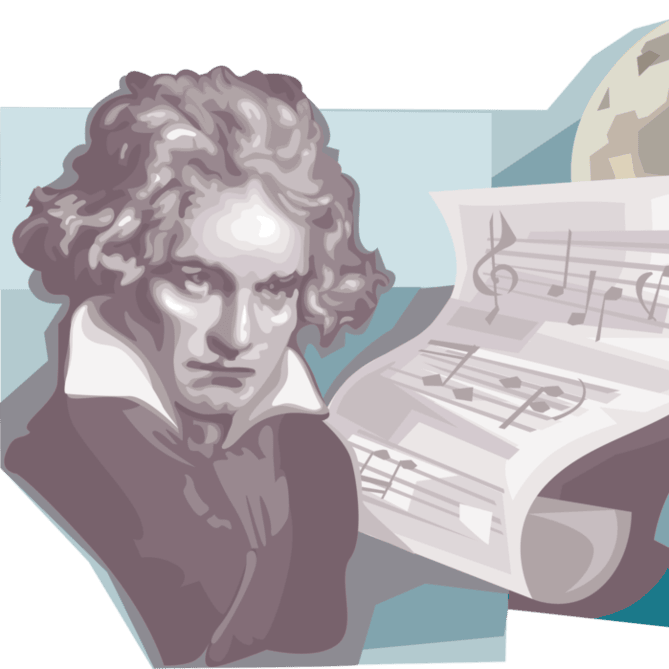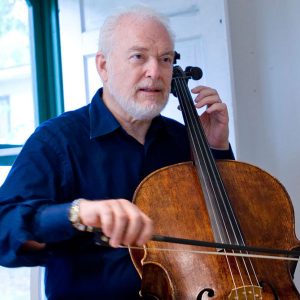
Reflections on the 17 Beethoven String Quartets: The Metronome Markings (Part 5 of 5)
Paul Katz
Beethoven’s Metronome Markings
By Paul Katz
It’s 2020, we are celebrating Beethoven’s 250th birthday, and I decided it is the perfect time to revisit the album notes I wrote 45 years ago for the Cleveland Quartet’s recorded Beethoven Quartet Cycle on RCA Victor. The 17 quartets of Beethoven were the core of our 26-year career as we immersed ourselves in research, score study, years of exhilarating rehearsals, two recorded cycles, 30 complete cycles in the major capitals of the world, and literally thousands of Beethoven quartet performances. Musicians generally agree that there is no other music as rewarding or profound in all of western music. These masterpieces have challenged me as a musician and enriched my life – what a privileged existence!
Formed in 1969, the CQ knew only 2 Beethoven quartets for the 1970 Beethoven bi-centennial year, but we joked that we would be ready for a cycle in 2020! Though it’s 50 years later and the Cleveland Quartet is no longer active, I could not let this special year go by without participating in some way, and so I returned to my notes written between 1975-1980, and reduced and edited them for this series of CelloBello blogs. The original project was voluminous – 3 boxed sets of LP vinyl, with written liner notes discussing each individual quartet. I have taken about 20% of that original project and rewrote it for CelloBello in five-parts: The Early, Middle, Late Quartets, the Metronome Markings, and Interpretive Considerations.
No composer has expressed Man’s deepest emotional states as profoundly as Beethoven. There is a heartfelt depth to the musical experience, an enlightened level of consciousness, a sincerity and nobleness of concept that enriches and inspires. “Those who understand (my music) must be freed by it from all the miseries that others drag about with themselves,” Beethoven is reported to have said. Whether or not he actually uttered these words is ultimately unimportant, for generations have found in his music the noblest and purest expression of universally shared human values such as Love, Joy, Peace and Strength of Character. There is despair and anger, even rage, but never hate, not a cynical or bitter note. Pain and suffering (which he knew better than most are beautifully expressed to us as a necessary part of the synthesis of life.
Beethoven’s Metronome Markings
Perhaps the most challenging interpretive problem of the Beethoven quartets is what to do with his metronome markings. Beethoven was distressed by the vagueness of Italian tempo headings, cared deeply about the performance tempi of his music, and convinced the celebrated mechanical genius Johann Mälzel to work on a device that could tell the player the desired pulse. Mälzel delivered his new invention to Beethoven in 1815 and Beethoven began inserting metronome markings in many eaarlier works including the symphonies, the Op. 18 quartets (1798 -1800) and the middle period quartets (1806-1810). There are many letters and reported comments from him indicating how much he valued this new aid and how fiercely he believed in his metronome markings. Just a few months before his death, on December 18, 1826, he wrote to his publishers, Schott: “The metronome indications for the Missa Solemnis will follow shortly. Wait for them. In our century they are certainly needed: and I have letters from Berlin saying the first performance of the Ninth Symphony went off with great success which I attribute to the metronome markings.” Nevertheless, almost 200 years after his death, controvesy continues over their value and a tradition of performance persists that often ignores these indications.
Why so many generations of continued resistance? Even the most recent urtext editions of the quartets, based on late 20th-century scholarship, omit the metronome markings from the printed parts. How mathematically accurate was this new apparatus? Is there the possibility that Beethoven’s judgment of tempo was adversely affected by 15 years of deafness?
To my knowledge, performers ignored the markings for at least 100 years after Beethoven. Perhaps the first great artist to champion them was Arturo Toscanini, who recorded all nine symphonies adhering to the indications. Another was Rudolf Kolisch, first violinist of the great Kolisch Quartet who wrote convincingly in their defense in the April 1943 Musical Quarterly, (an historic and important article now easily available online). Other musicians followed including the early Cleveland Quartet. We worked (even struggled) with every indication, came to believe in them, and they became strongly influential to our interpretive process.
Kolisch argued that as so many of Beethoven’s tempi are not at all problematic, the hypotheses of a faulty metronome cannot by itself explain the questionable ones. Today’s digital metronomes are accurate and reliable, but even as recently as the 1970s as the Cleveland Quartet worked with a variety of machines both mechanical and electrical, we found that metronomes typically differed from each other by one or two notches. So it seems plausible that the metronome of 1815 may have had at least some technical inaccuracy, and my quartet found that by reducing the markings by 2 notches, the majority of Beethoven indications fell within our musical “comfort zone.” (I am over-simplifying. This didn’t take care of all of the problems, but it solved many). Of the more than 50 markings he gave in the string quartets, only two felt a bit slow to us – the second movement of Op. 18. No. 6 and the Adagio ma non troppo at the close of the fourth movement of Op. 59, No. 1.
It is impossible to know if 15 years of deafness may have affected Beethoven’s perception of tempo, for while he heard every note, every detail, it was all within his head. We all understand how natural it is for the mind to move silently through a sentence at a pace quicker than one would speak the very same thought. It is also true that “singing” a phrase in one’s imagination may take less time than the actual act of singing it aloud. This could partially explain why so many of the markings feel fast.
And acoustics could not have been a tempo consideration for the deaf Beethoven, yet performers choosing tempi must take them into account. Resonant, cavernous halls make reverberating notes run into one another, blur fast passages, muddle the clarity of voices, and give the listener a subjective impression of a faster tempo than is being played. Extremely dry halls without acoustical after-ring, and very intimate settings where the listener (or a microphone) is close, require more real speed. (The Cleveland Quartet usually played faster tempos on our recordings than in the majority of concert halls). Curiously, 200 years after Beethoven’s death, the clarity and presence of today’s digital recordings make more plausible, even desirable, Beethoven’s more brilliant markings. While most of the Cleveland Quartet’s analog recorded movements for the early and middle quartets are within a notch or two of Beethoven’s indications, it was never our intention to make them a point of principle, but rather to strive in every instance for a musical statement of sincerity and conviction.
A metronome marking does not mean metronomic playing. Rubato, timing, rhythmic flexibility and even tempo changes within a movement are essential interpretive tools guided by personal taste, instinct and creative imagination. While musicians of today strive more for tempo unification than performers in the time of Beethoven, we know from countless descriptions of Beethoven’s piano performances that he was a free and spontaneous player. Slowing the second theme (as he did) and some tempo flexibility are often keys to making his metronome markings work.
It is wonderful that more and more of today’s performers are taking the metronome markings of Beethoven seriously. We do not need to be mathematically literal, but when lived with and absorbed over time, the process can be revelatory. And I can imagine Beethoven at 250 years of age, smiling and thinking “Finally – it’s about time!”
Subjects: Chamber Music, Repertoire
